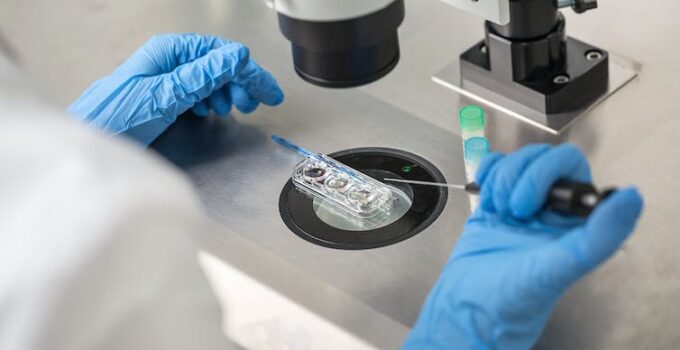In vitro fertilization, commonly known as IVF, is a reproductive technology used to help couples who are struggling with infertility. IVF involves fertilizing an egg with sperm outside the body and transferring the resulting embryo into the uterus. There are several types of IVF, each with its unique benefits and drawbacks. In this article, we will explore the different types of IVF and their differences.
Page Contents
1. Traditional IVF

Source: twitter.com
Traditional IVF is the most commonly used type of IVF. It involves stimulating the ovaries to produce multiple eggs, which are then collected and fertilized with sperm in a laboratory. After a few days, the resulting embryos are transferred into the uterus. Traditional IVF has a high success rate but also carries a higher risk of multiple pregnancies and ovarian hyperstimulation syndrome.
2. ICSI
Intracytoplasmic sperm injection (ICSI) is an IVF often used for male fertility issues. With ICSI, a single sperm is injected directly into the egg to fertilize it. This technique can help overcome problems such as low sperm count or poor sperm motility. ICSI has a similar success rate to traditional IVF, but it is more expensive.
3. Mini-IVF
Mini-IVF, or minimal stimulation IVF, involves using a lower dose of fertility drugs to stimulate the ovaries. Fewer eggs are produced, but they are of higher quality. Mini-IVF has a lower risk of ovarian hyperstimulation syndrome and is less expensive than traditional IVF, but it also has a lower success rate.
4. Natural cycle IVF

Source: opportunityindia.franchiseindia.com
Natural cycle IVF is a type of IVF that does not involve using fertility drugs to stimulate the ovaries. Instead, the woman’s natural cycle is monitored, and a single egg is collected when it is ready to be released. This technique is less invasive and has a lower risk of complications but a lower success rate.
5. Frozen embryo transfer
Frozen embryo transfer (FET) involves freezing embryos that were not used during a previous IVF cycle and then transferring them into the uterus at a later date. FET is less invasive than traditional IVF and has a higher success rate than natural cycle IVF, but it is more expensive.
Which type of IVF is right for you?

Source: theconversation.com
In addition to the mentioned IVF options, there are a few other variations that can be considered.
One such option is known as preimplantation genetic testing (PGT), which involves screening the embryos for genetic abnormalities before they are transferred into the uterus. This can be particularly beneficial for couples with a history of genetic disorders or advanced maternal age.
Another option is known as donor egg IVF, where eggs from a donor are used instead of the woman’s own eggs. This option is suitable for women who are unable to produce viable eggs or have a high risk of passing on genetic conditions.
The type of IVF that is right for you will depend on several factors, including your age, medical history, and fertility issues. Your doctor can advise you on the best course of action. It is also important to consider the cost of the different types of IVF, as well as the potential risks and benefits.
Conclusion
IVF is a complex and often expensive procedure, but it can help couples struggling with infertility conceive. Several types of IVF are available, each with its unique benefits and drawbacks. By understanding the differences between the different types of IVF, you can make an informed decision about which one is right for you.




